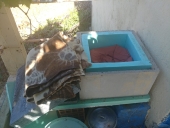
 3
3




 2
2




 2
2




 1
1




 4
4




Check out the Food Forest Card Game: https://permies.com/wiki/141665/Food-Forest-card-game-English
 3
3




randyeggert.com
 3
3




 2
2




 4
4





"Also, just as you want men to do to you, do the same way to them" (Luke 6:31)










"Also, just as you want men to do to you, do the same way to them" (Luke 6:31)
 3
3




Blog: 5 Acres & A Dream
Books: Kikobian Books | Permies Digital Market
 4
4




sow…reap…compost…repeat
 5
5





 6
6




How Permies works: https://permies.com/wiki/34193/permies-works-links-threads
My projects on Skye: The tree field, Growing and landracing, perennial polycultures, "Don't dream it - be it! "






 2
2




max guo wrote:I see the last post is 9 years old, but came across some youtube videos that might have been made since then that might be of interest.
https://www.youtube.com/watch?v=FGLFeYNr2w0
https://www.youtube.com/watch?v=Ab26wuejs1s
https://www.youtube.com/watch?v=ZUZvjf2U39M
https://www.youtube.com/watch?v=6zyV3dbmgaA
"Also, just as you want men to do to you, do the same way to them" (Luke 6:31)






 5
5






"Also, just as you want men to do to you, do the same way to them" (Luke 6:31)
 5
5




Radis.
Living and growing on my small homestead near a project of permaculture school.
"There are no non-radical options left before us" Naomie Klein in This Changes Everything






 1
1




Raphaël Blais wrote:I rarely see haybox made of wood. Does somebody made it this way? I was thinking making mine so it serve the double purpose as tea table in the living room. Maybe with some burn carving on it.
There's even a PEA Badge bit about it. I will hurry for it since nobody did it yet! It will be useful for my pep food sand badge to have one and diminushing my propane consumption in summer....
"Also, just as you want men to do to you, do the same way to them" (Luke 6:31)
 2
2




 3
3







-Halley
I like to make stuff. Check out my store! https://goimagine.com/thesimplesteward/

|
joke time: What is brown and sticky? ... ... ... A stick! Use it to beat this tiny ad!
Freaky Cheap Heat - 2 hour movie - HD streaming
https://permies.com/wiki/238453/Freaky-Cheap-Heat-hour-movie
|





